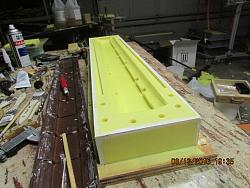Bob,
Thank you for the all the details and especially the hints about what might go wrong. The whole process has been very interesting and universal for other types of model procedures for model work. I am interested in seeing more about your 'Gauge One' models scaled at 1:32.
Regards,
Paul



 LinkBack URL
LinkBack URL About LinkBacks
About LinkBacks


 Reply With Quote
Reply With Quote











Bookmarks